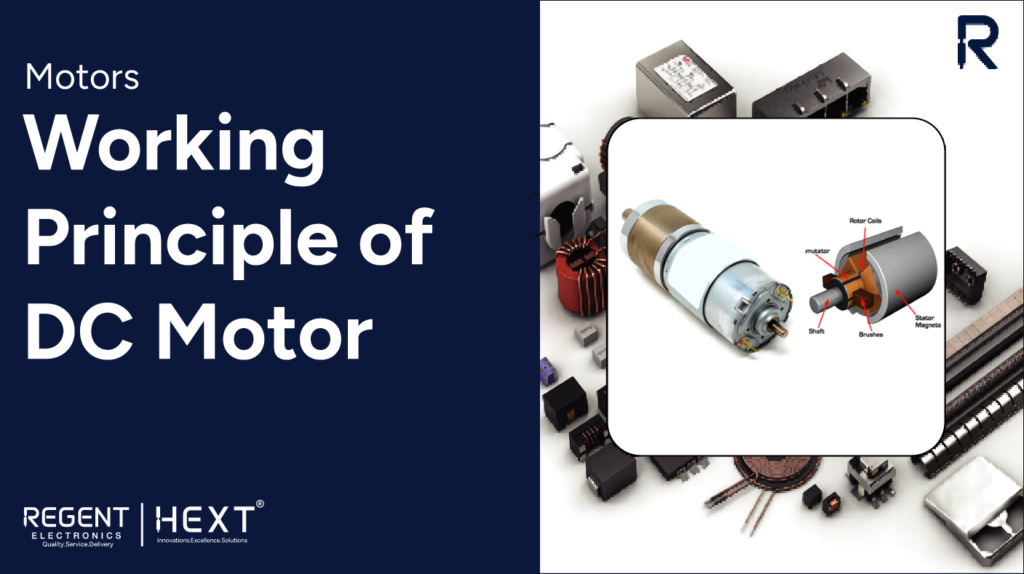
Working Principle of DC Motor: Explained for Beginners
Welcome to our DC motor blog series! In this first post, we’ll break down the working principle of a DC motor, explain its construction, and give you a clear understanding of how it converts electrical energy into mechanical motion. Whether you’re a student, hobbyist, or engineer, this guide will help you build a solid foundation in motor technology.
What is a DC Motor?
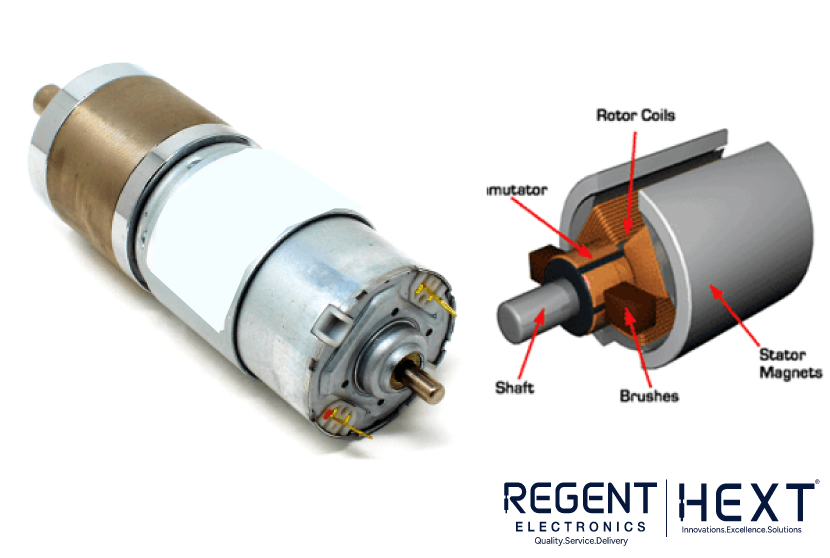
A DC motor (Direct Current motor) is an electromechanical device that converts direct electrical energy into mechanical energy. It operates on the fundamental principle of Lorentz Force, which states that a current-carrying conductor placed in a magnetic and electric field experiences a mechanical force.
This force is the key to how motion is generated in a DC motor.
Types of DC Motors
DC motors come in several types based on how the field windings are connected. The four most common types are:
- Series DC Motor
- Shunt (Parallel) DC Motor
- Compound DC Motor
- Permanent Magnet DC Motor
Each type has unique characteristics that make it suitable for specific applications like robotics, electric vehicles, and industrial automation.
Construction of a DC Motor
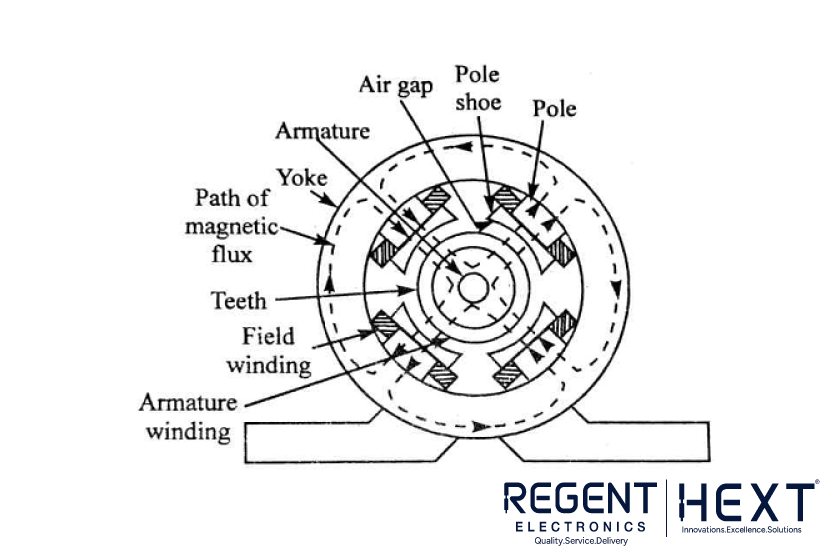
Understanding the structure of a DC motor helps in grasping how it functions. A DC motor consists of two primary parts:
- Armature (Rotor) – The rotating part of the motor.
- Stator – The stationary magnetic field component.
Other Key Components:
- Armature Winding: Connected to the power supply, it generates the rotating magnetic field.
- Commutator: Converts alternating current (AC) induced in the armature into direct current (DC) output.
- Brushes: Maintain electrical contact between the stationary and rotating parts.
- Magnetic Field Source: Either permanent magnets or electromagnets used in the stator.
How Does a DC Motor Work?
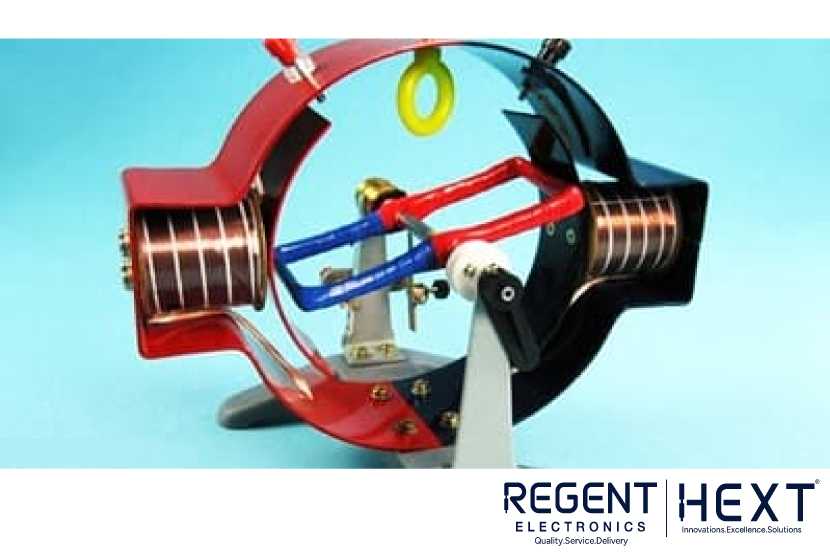
The working principle of a DC motor is simple yet powerful:
When a current-carrying conductor is placed in a magnetic field, it experiences a mechanical force.
This force, governed by Fleming’s Left Hand Rule, causes the rotor to turn.
Fleming’s Left Hand Rule:
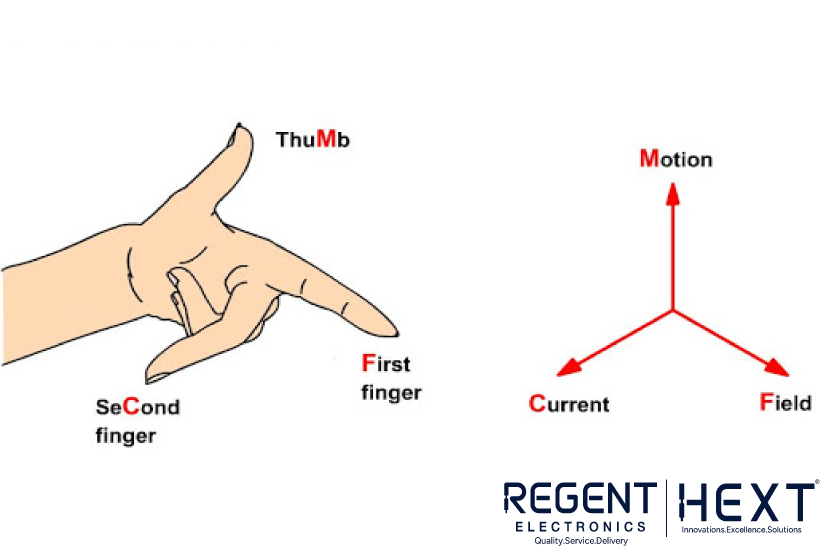
Stretch out your left hand so that:
- The index finger points in the direction of the magnetic field,
- The middle finger points in the direction of current,
- Then the thumb will indicate the direction of the force (motion).
Mathematically:
F = BIL
Where:
- F = Force (Newtons)
- B = Magnetic flux density
- I = Current (Amperes)
- L = Length of the conductor in the magnetic field
As current flows through the armature winding, and a magnetic field is present due to the stator, the conductor experiences motion—thus converting electrical energy into mechanical rotation.
What is Back EMF in a DC Motor?
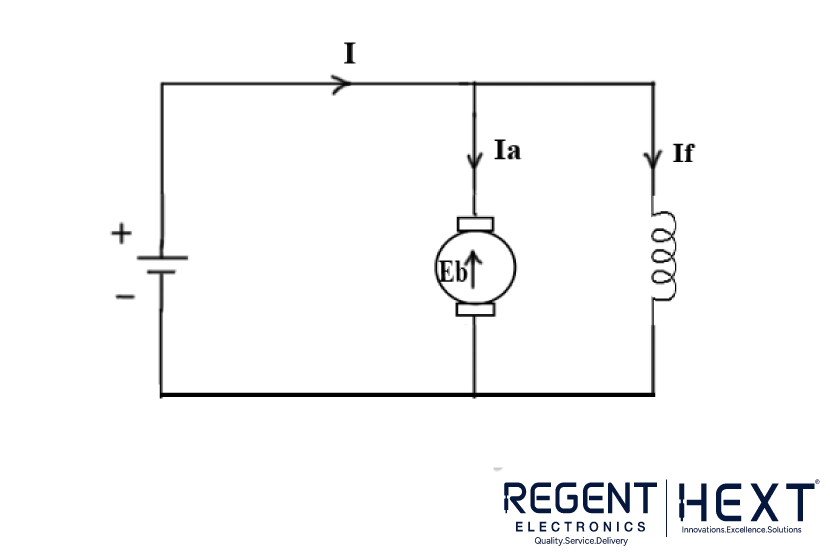
As the motor rotates, it also acts like a generator, producing a voltage known as Back Electromotive Force (Back EMF). This is an essential part of a DC motor’s self-regulating behavior.
According to Faraday’s Law, a voltage (EMF) is induced whenever conductors move through a magnetic field. In the case of a DC motor, this induced EMF works against the applied voltage, limiting the armature current.
Why is Back EMF Important?
- Stabilizes Motor Speed: If the load decreases, the speed increases, which increases the Back EMF and reduces current—automatically regulating torque.
- Prevents Overcurrent: Back EMF reduces excess current draw as the motor speeds up.
- Ensures Efficiency: Helps the motor adapt to changing loads with minimal control circuitry.
Example:
- Sudden Load Drop: Speed increases → Back EMF increases → Current decreases → Torque reduces.
- Sudden Load Increase: Speed decreases → Back EMF drops → More current flows → Torque increases.
Summary: How a DC Motor Works
Here’s a quick summary of the DC motor working principle:
- DC voltage is applied to the armature.
- Current flows through the winding.
- The magnetic field from the stator interacts with this current.
- Lorentz Force causes the armature to rotate.
- The commutator ensures unidirectional torque.
- Back EMF develops as the motor spins, regulating speed and current.
Final Thoughts
Understanding how a DC motor works is essential for designing circuits in robotics, automation, and motor control projects. Whether you’re working with Arduino, Raspberry Pi, or industrial PLCs, DC motors are at the heart of many applications.
At Regent Electronics, we provide high-quality DC motors, motor drivers, and control boards to help you bring your ideas to life.
Stay Tuned!
